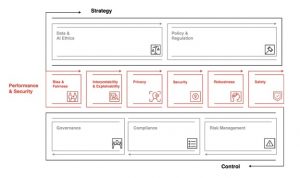Top telecom operators are rapidly building strong foundations for future 5G networks. The next-generation wireless technology, which is ten times faster than the current LTE networks, has the potential to transform people, processes, and policies innovatively. Given that many global service providers have turned to bolster telco edge capabilities and putting them at the core of their 5G infrastructure goals.
According to a GSA report, as of December 2020, 140 operators in 59 countries/territories have introduced commercial 3GPP-compatible 5G services. In the next couple of years, 5G is expected to make substantial inroads in many countries, including India.
However, to leverage the real potential of 5G, telcos need to develop new structures that can provide continuous support for high bandwidth and low-latency applications and effectively execute their administration. This is where the Telco edge could help win big!
Evolving business needs
As 5G moves to the mainstream, Internet of Things (IoT) devices such as autonomous cars, connected appliances, and robotic processes, gain the necessary fuel to communicate and share data faster than ever. Swedish telecom equipment maker Ericsson estimates around 5 billion IoT connections by 2025, up by the existing 1 billion connections today. That’s huge! Such a spread connected network will also result in an explosion of data that could strain the existing cloud ecosystems.
The biggest challenge will be: how to manage, process, and deliver this high volume data and support low-latency based real-time applications using prevailing communication networks in a secure, reliable, and efficient way.
Telco edge enables enterprises to lessen reaction processing to milliseconds, thereby eliminating the need to transfer data to the centralized cloud. By taking cloud services and resources together, edge deployments provide benefits such as latency reduction, bandwidth scale, and mobility support, imperative for the next-Gen time-sensitive applications and services.
Edge will enable mobile network providers to move the value chain upward and unlock new revenue streams. It adopts cloud-native technologies to distribute the network infrastructure cost, just like Infrastructure-as-a-service (IaaS) offering.
Collaboration route for ample opportunity
With 5G services growth inevitable in the near future, top Indian telecom service providers, such as Reliance Jio, Bharti Airtel, and VI are also gearing up to further their edge clouds and leverage it as a new revenue opportunity. India’s service providers can take a cue from many global telcos who are aggressively building a distributed cloud approach.
While ‘edge’ may be uncharted waters for telcos to date, the year 2021 is likely to be a defining year from the telco edge deployment perspective. South Korean wireless telecommunications operator SK Telecom and Japanese Telecom operator KDDI recently launched 5G edge cloud services. American multinational telecom company, Verizon as well is exploring the potential of AI at the Edge of the network to locate and provide necessary real-time support to relevant IoT resources. Companies like Renovo, a connected car startup, and electronics giant LG are among the organizations testing telco edge services on Verizon’s network.
Many other telcos worldwide are screening the automated environments and investing in AI and machine learning capabilities to save OPEX and open-up new exciting revenue streams in the 5G networks.
However, telcos are not the only ones battling for their share in the edge computing market. Global hyperscalers such as Google, Microsoft, Facebook, and Amazon are building their edge capabilities and have their unique strengths, such as global reach and high investment potential for R&D.
The year 2021 is likely to see both Hyperscalers and mobile network operators forging strong partnerships to enable AI and Edge use cases.











0 Comments